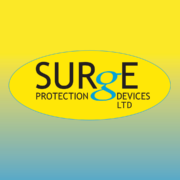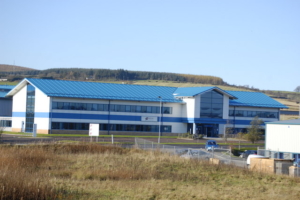Surge Protection for the Modern Home
20 years ago, we would have classified a domestic home as a simple electrical installation but with the massive jump in available technology, I’m not sure simple electrical installations exist anymore. This causes complications in all areas of designing an electrical installation, and the topic of surge protection devices is no different.
For a domestic installation the advice has always been quite simple. If it is a normal sized home, with one consumer unit, you need one SPD and that will provide you sufficient protection. There has been a bit of confusion around the application of the 10-meter rule, but this is largely for much larger, more complex installations, with external lightning protection systems are installed and we are considering the requirements of BS EN 62305. Not your usual terrace home.
The choice of SPD, again, was quite simple. Most domestic installations would need a type 2 SPD installed in the consumer unit. The only time this would change, would be in the event that the house is directly fed via an overhead supply, where a type 1,2&3 combined SPD should be installed between the meter and the consumer unit, to provide protection in the event of a direct lightning strike to the supply cable feeding the property.
So, you would know quite quickly what type you needed, once you knew the earthing arrangement, a quick call to your friendly SPD experts and you would have a part number, easy peasy.
Now, we have a few more complications.
Does the installation have an EV charger? It is recommended, and required by some manufacturers of chargers, to have an SPD installed to provide protection to the valuable sensitive electrical equipment. This is even more relevant if the charger being installed has a loss of neutral device. This device is a safety control, which is there to disconnect the charger in the event of a loss of neutral, but the sensitive components within this device can be degraded, overtime, by repetitive switching surges, such as those produced by an inverter – like an EV charger. In this case, it would be recommended to install an SPD local to the car charger, this would be a type 2 SPD, and could be installed within the garage unit, supplying the charger.
Does the installation have a PV system? It is a requirement in BS7671, that if the installation requires an SPD on the AC side, it is also required on the DC side of a solar PV system. This device is different to the devices you would install on the AC installation and is specifically designed for the use on the DC side of the PV system. As it’s very rare to find a domestic installation with an external lightning protection system, we can pretty much say for a domestic PV installation, it would be a type 2 SPD. The additional consideration for the selection of a PV SPD is the operating capacity of the inverter. Generally, we would be looking at a 600V/1000V system, usually a 600V for most domestic installations. So, for our devices, this would be the SPDPV600, and this would need to be installed one per string, in parallel with the inverter.
We even have to think about the heating system, now, it is no longer down to the heating engineer! The growth in popularity of ground source and air source heat pumps have introduced sensitive control panels, which are extremely expensive to replace, along with downtime of a heating system, which no homeowner will want. If this equipment is installed, it would be recommended to look at an SPD local to the control panel or the pump, depending on the installation, to provide suitable overvoltage protection.
We have an ever-expanding technological growth right now, in the domestic market. Consumers are concerned with reducing energy usage alongside producing energy, with battery storage & prosumer installations on the rise. We can even see an emerging market for domestic voltage optimisation, aimed at reducing energy usage, technology that previously we have only seen applied in large industrial settings.
All of this is easy to navigate, with a bit of guidance, but it is definitely worth thinking about, the next time you look at what you think is just a simple job, there are not many of those left!


























